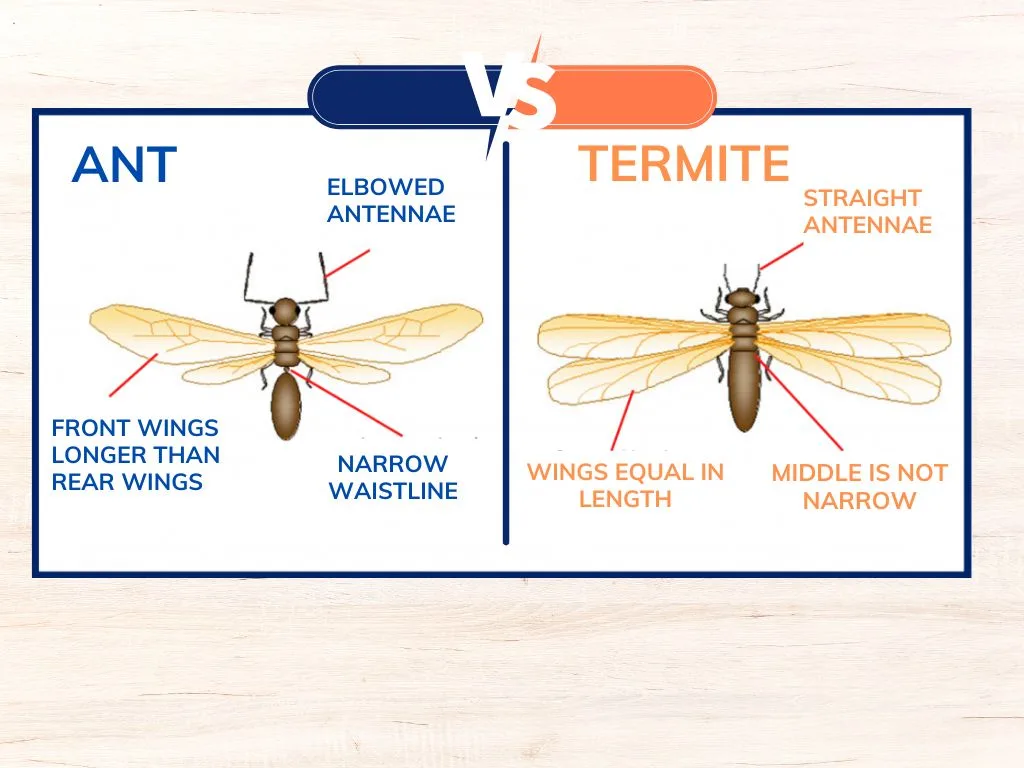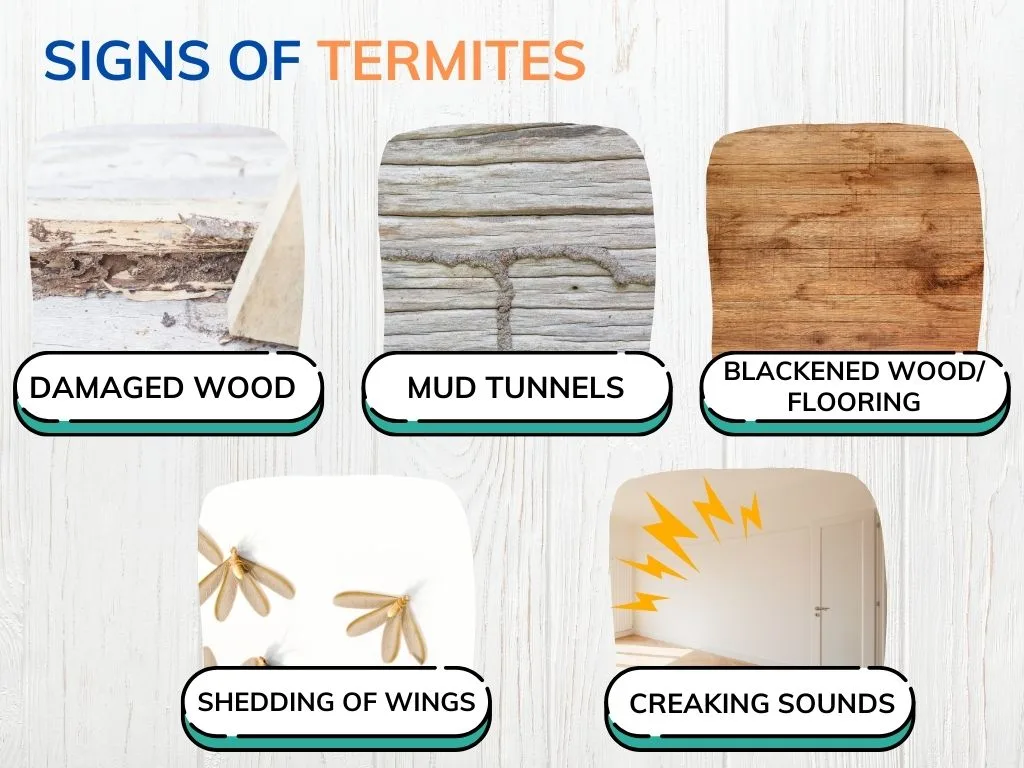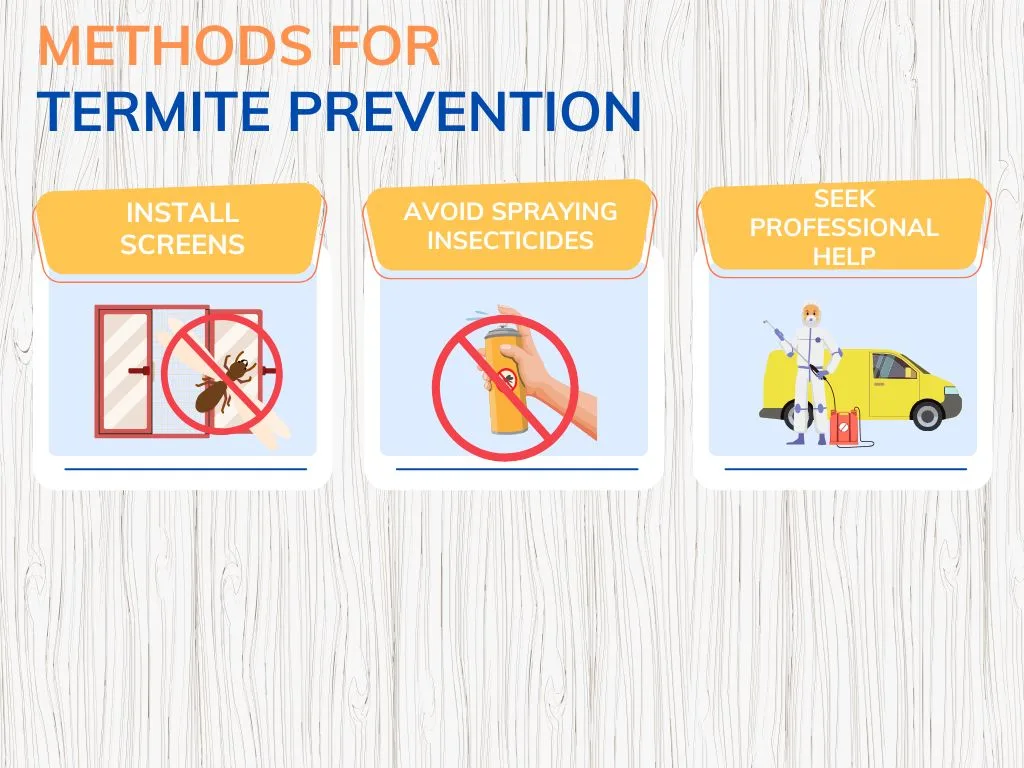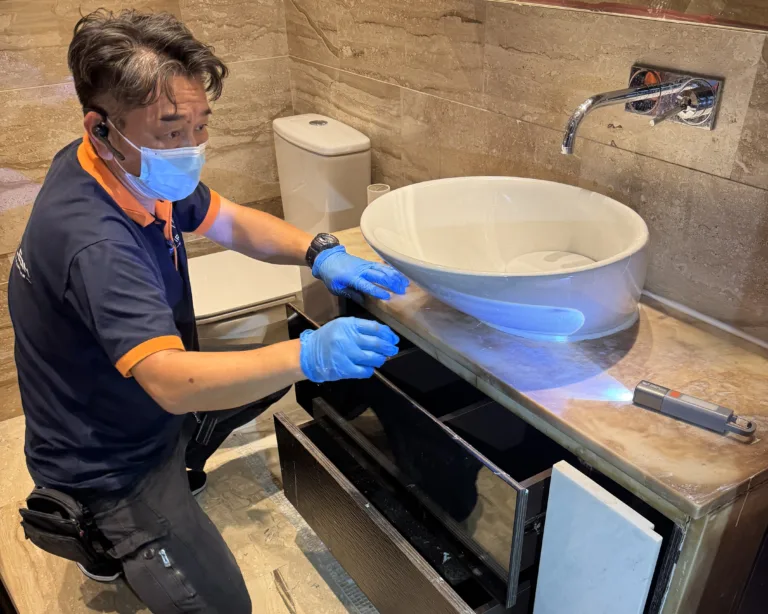We have clients who initially noticed signs of termites but ignored them. Later, when they needed to move a bookshelf, they discovered that the entire bottom of the bookshelf and the wooden floor had been damaged by termites. When we arrived to inspect, we found that multiple areas of the floor, door frames, and furniture inside the house had already been eaten away by termites. Although we were ultimately able to help the clients eliminate the termites, the damaged furniture, floor, and door frames could not be restored. The time and cost for future renovations can be very expensive.
If you notice unexplained mud trails along the walls, moldy wooden floors, deteriorating or hollow wooden furniture, granules or small mounds of material scattered near the furniture, or fallen wings from flying ants on the ground.
Be cautious—these may be signs of termites!
Termites are highly destructive pests that can quickly eat through wood, often going unnoticed and causing significant damage to the structure of a home. Don’t think that only wooden houses or village homes are susceptible to termites; even if you live in a high-rise unit, termites can establish themselves in your home as well. "Flying ants" are termites with wings that are preparing to mate; they can fly inside your home and establish a nest.
We often hear clients complain that when they first noticed signs of termites, they thought it was just a minor pest issue. Little did they know that later they would have to spend hundreds of thousands on renovations to repair the damage caused by termites, with the entire process being incredibly frustrating. If your home is unwell, seeking help early is always the best strategy. If your property unfortunately has the same situation, don’t hesitate—let the professionals handle it. Contact us!
Termites are not ants…
Many people think that termites are white ants, but that is not. Termites belong to the order Isoptera, which is closely related to cockroaches. Due to their similar body shape and milky white color, they are referred to as white ants.
Termites primarily feed on organic matter and wood, including flooring, door frames, and wooden furniture. Their destructive power and speed are astounding; they can completely hollow out a door frame in just two weeks. In addition to gnawing through wood, termites also secrete formic acid, an acidic substance that can damage concrete walls and even strong materials like electrical wires, posing a danger and causing severe damage to buildings.

Termites are social insects, and if one termite is found in a home, it is likely that a colony has already invaded, possibly even hiding a nest. Termites can generally be categorized into:
Queen: Responsible for reproduction, usually there is only one queen per nest. Termites have a high reproductive capacity, laying one egg every six seconds, with up to 10,000 eggs produced in a single day.
Lifespan: Typically, 15 to 30 years.
Soldier: These termites do not have reproductive capabilities and are primarily responsible for defending the nest.
Lifespan: Generally, 1 to 6 months.
Worker: Non-reproductive termites, these are the most common type of termites, responsible for foraging, building, and maintaining the tunnels.
Lifespan: Usually ranges from a few weeks to 3 to 7 years.
Termite alates: These are termites in the mating phase. Each year, during the rainy season, they grow wings, leave their nests, and prepare to mate. Once two flying termites find suitable partners, they will shed their wings, settle down, and establish a new nest.
Signs and Conditions of Termite Infestation
Unidentified Mud Tubes
Termites are very light-sensitive and build mud tunnels to keep their bodies moist. They often construct these tunnels near floors, walls, and electrical switches for protection. If you notice a long mud tube on your walls, near electrical switches, or in corners of your home, it may indicate that termites have invaded.
Shedding of wings
Termite alates are in the mating phase and prefer humid, enclosed environments. They are attracted to light and will fly toward bright areas. When flying termites find a suitable habitat, they shed their wings, begin to reproduce, and eventually transform into regular termites. If you find a large number of shed flying termite wings on windowsills or floors, it likely means termites have invaded your home.
Damaged Furniture
Termites can travel through cracks in walls to reach other areas and will start gnawing on wood upon contact. If you hear a hollow sound when tapping wooden furniture, door frames, or floors, or if pressing lightly creates a dent, this may indicate that the wood has been extensively damaged by termites. Additionally, termites chewing through electrical wires is a common issue, posing a risk of electrical leakage.
Creaking Sounds from Wood
Termites may produce a creaking sound while moving, usually caused by gnawing on wood or moving within their nest. This is a form of communication, where they knock their heads against the wood to warn companions or attract the attention of the colony. If you hear this sound, especially near wooden furniture or walls, it may serve as a warning signal that termites are present in your home.

Three Main Methods for Termite Prevention
1) Install Screens:
Install screens on windows and vents to prevent termites from entering the home, especially during humid seasons. Ensure that doors and windows are well-sealed to reduce the chances of termites getting inside.
2) Stay Calm and Avoid Spraying Insecticides:
If you discover termites, remain calm and do not immediately use insecticides. Many insecticides contain highly potent synthetic pyrethroids, which not only fail to kill the queen but may also cause termites to spread to other areas.
3) Seek Professional Help:
If termites have invaded and built a nest, it is usually difficult for an person to eliminate them completely. To effectively resolve the issue, it is essential to kill the queen, but since she does not leave the nest, homeowners typically only encounter soldiers or workers. Killing these will not solve the problem, as the queen will continue to reproduce soldiers and workers. Therefore, if you find termites, do not hesitate to contact a professional service. The longer you wait, the greater the damage to your home will be.

First Clean's Methods for Termite Treatment
There are various termite extermination procedures offered by pest control companies, which can be broadly categorized into three types:
1. Spraying Insecticide:
This method involves spraying termite insecticide on the surface of areas where termites are present. It is simple and has the lowest cost. Many budget pest control companies typically use this method.
2. Drilling and Injecting Pesticide:
This method also uses termite insecticide, but instead of just spraying the surface, it involves drilling tiny holes in floors, door frames, and built-in cabinets to inject the pesticide. This allows the insecticide to penetrate the wood for broader coverage. However, this technique requires skill and is time-consuming, involving more labor and complexity. Most low-cost termite extermination companies do not use this method.
3. Baiting Systems:
This method uses a bait system to lure termites to feed on the bait, which then spreads to the entire termite colony. Baiting systems are more commonly used in commercial projects. Although they involve more treatment sessions and higher costs, baiting systems can provide complete protection for the building and are particularly useful for tree maintenance or heritage restoration.
Residential Projects
For typical residential projects, First Clean drills tiny holes in floors, door frames, and built-in cabinets to ensure that all wood consumed by termites is treated with insecticide. We then apply a broad coverage of termite pesticide throughout the house, leaving no escape for the termites. Due to the extensive application, we are confident that two treatments will effectively eliminate the problem. This approach is not like that of many low-cost pest control companies, which often require three or four treatments without resolving the issue, leading to wasted time and increased frustration.
Commercial Projects
In the case of commercial projects, which may involve complex architectural structures, First Clean adapts our methods based on the client's requirements, employing either drilling and injecting or baiting systems. Whether dealing with heritage sites, old trees, general commercial buildings, or construction foundations, we can handle the situation effectively, addressing both symptoms and root causes.

Through these professional procedures, First Clean is confident to achieve 100% termite eradication.However, to ensure optimal results, we typically recommend follow-up inspections after a period of time to confirm that all termites have been thoroughly dealt with. Throughout the service process, we are committed to ensuring that our clients' living environments are safe and free from termites.
After completing the entire termite treatment process, First Clean offers a maintenance period of up to 18 months.During this maintenance period, if any active termites are discovered, we will provide free termite services to ensure they are eliminated.
Improper use of pesticides can lead to the spread of the colony. If you notice signs of termites, please contact us as soon as possible.
First Clean, as termite control experts, would like to remind everyone that when searching for a termite control company. Please choose one with a good reputation that values communication.
We approach termite treatment with a commitment to "quality, professionalism, and dedication.
